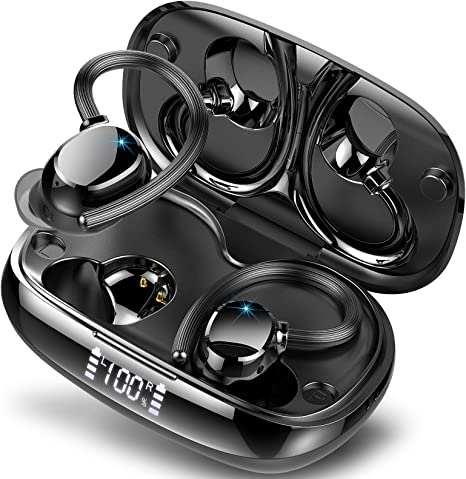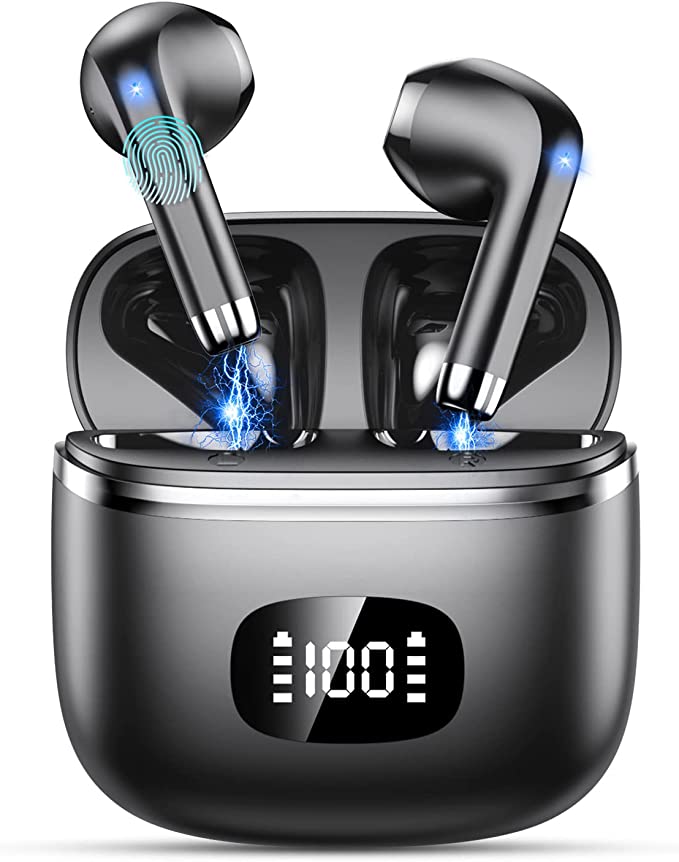The Engineering of Clean Air: A Scientific Look at the Jafanda JF999 Air Purifier's Technology
Update on July 29, 2025, 3:20 p.m.
The air within our homes, often considered a sanctuary from the outside world, harbors an invisible ecosystem of particles and gases. While we see the dust motes dancing in a sunbeam, we are oblivious to the finer, more insidious contaminants: volatile organic compounds (VOCs) outgassing from furniture, microscopic pet dander, pollen, mold spores, and the ubiquitous particulate matter known as $PM_{2.5}$. Managing this indoor environment has evolved from a simple matter of ventilation into a sophisticated scientific discipline.
To understand this field, we can deconstruct a modern air purifier not as a mere appliance, but as a dedicated scientific instrument for the home. The Jafända JF999 serves as a compelling case study, showcasing a synthesis of applied physics, chemistry, and fluid dynamics, all engineered to achieve one goal: verifiably clean air. This is an exploration of the science behind its specifications.

Quantifying the Unseen: The Power of Sensing and Measurement
Before you can control a variable, you must first measure it. The primary adversary in the battle for indoor air quality is $PM_{2.5}$—particulate matter with an aerodynamic diameter of 2.5 micrometers or less. These particles are particularly hazardous because they are small enough to bypass the body’s natural defenses and penetrate deep into the lungs, potentially entering the bloodstream.
The Jafända JF999 employs a laser-based PM₂.₅ sensor to continuously quantify this threat. Unlike more basic infrared (IR) sensors that provide a general estimation of air turbidity, a laser sensor operates on the principle of light scattering. It projects a focused beam of light through an air sample chamber; when particles pass through the beam, they scatter the light. A photodetector measures the intensity and frequency of these scattered light pulses. By analyzing this data, the purifier’s microprocessor can calculate the concentration of particles with remarkable accuracy.
This real-time data stream is the brain behind the machine’s Auto Mode. It establishes a classic engineering feedback loop:
- Sense: The laser sensor measures the current $PM_{2.5}$ concentration.
- Compare: The internal processor compares this reading to preset air quality thresholds, often aligned with the Air Quality Index (AQI).
- Actuate: The processor adjusts the fan speed accordingly. A sudden spike in pollutants—from cooking smoke or an open window—triggers a higher fan speed for rapid purification, while clean air allows the unit to ramp down, conserving energy and reducing noise. It’s an intelligent system designed to respond dynamically to the changing conditions of its environment.

The Brute Force of Filtration: A Tale of Two Contaminants
Air purification is a two-front war, requiring distinct strategies for solid particles and gaseous compounds. The JF999’s filtration system is a multi-stage assembly designed to tackle both.
The Particulate Barrier: HEPA 13 Demystified
The cornerstone of particulate filtration is the True HEPA filter. The term HEPA (High-Efficiency Particulate Air) is not a marketing buzzword but a specific, government-regulated standard, originally developed during the Manhattan Project to capture radioactive particles. To be classified as “True HEPA” in the United States, a filter must capture at least 99.97% of airborne particles at 0.3 micrometers $(0.3 \mu m)$ in size.
This $0.3 \mu m$ benchmark is critical because it represents the Most Penetrating Particle Size (MPPS)—the particle size that is most difficult for a filter to trap. It’s a common misconception that HEPA filters work like a simple sieve. In reality, they employ three distinct physical mechanisms:
- Inertial Impaction: Larger, heavier particles ($>1 \mu m$) are unable to follow the curving airflow around filter fibers and collide directly with them due to their inertia.
- Interception: Mid-sized particles ($>0.1 \mu m$) follow the airflow but are captured when they pass close enough to a fiber to make contact.
- Diffusion: The smallest, lightest particles ($\<0.1 \mu m$), such as viruses and ultrafine dust, move in an erratic, random pattern known as Brownian motion. This chaotic movement dramatically increases their probability of colliding with a filter fiber.
The Jafända JF999 utilizes an H13 HEPA filter, a grade defined by the European EN 1822 standard, which requires a minimum filtration efficiency of 99.95% at the MPPS. The manufacturer states it can capture particles down to 0.03 microns, which is consistent with the principle of diffusion being highly effective for these ultrafine particles.

The Molecular Trap: The Science of Activated Carbon
While HEPA filters are masters of capturing solid particles, they are ineffective against gaseous pollutants like VOCs (e.g., formaldehyde, benzene) and odors. This is where the second stage of filtration, the activated carbon filter, comes into play.
The JF999 contains a substantial 3.38 pounds of pelletized activated carbon. The efficacy of this material lies not in simple filtering, but in a chemical process called adsorption. Activated carbon is treated to create a network of millions of microscopic pores, resulting in an astonishingly vast internal surface area—a single gram can have the surface area of a football field.
When VOC molecules in the air pass through this carbon bed, they are attracted to this surface by weak intermolecular forces known as van der Waals forces. They become trapped in the pores, effectively removed from the air. The form and quantity of the carbon are crucial. Pelletized carbon offers a much greater surface area and less air resistance than thin, impregnated carbon sheets, allowing for more effective and longer-lasting adsorption. The significant weight of the carbon in the JF999 indicates a high capacity for capturing a large volume of gaseous pollutants before the filter becomes saturated.

The Engine of Purity: Airflow Dynamics and Efficiency
An excellent filter is useless if you cannot move a sufficient volume of air through it. The performance of an air purifier’s “engine”—its fan and airflow design—is quantified by a critical, standardized metric: CADR, or Clean Air Delivery Rate.
Measured in cubic feet per minute (CFM) or cubic meters per hour ($m^3/h$), CADR represents the volume of filtered air a purifier can deliver. It is the single most important metric for comparing the raw purification speed of different units. The Jafända JF999 boasts a powerful CADR of 588 CFM (approximately 1000 $m^3/h$).
This number allows for a practical calculation of effectiveness. For example, in a 915-square-foot room with 8-foot ceilings (a volume of 7320 cubic feet), a CADR of 588 CFM can provide:
$$\text{Air Changes per Hour (ACH)} = \frac{\text{CADR (CFM)} \times 60 \text{ min/hr}}{\text{Room Volume (ft}^3)} = \frac{588 \times 60}{7320} \approx 4.8 \text{ ACH}$$
This means the purifier can, in theory, exchange the entire volume of air in the room with clean air nearly five times every hour, a rate recommended for allergy sufferers.
Achieving such a high CADR often comes with the penalty of high noise and energy consumption. The JF999’s design addresses this with its patented “Dual-in & Dual-out” architecture. Instead of relying on a single, large, high-speed fan, it uses two smaller fan-and-motor assemblies. From a fluid dynamics perspective, this approach can increase the total cross-sectional area for air intake and exhaust. This may reduce air velocity at the vents, minimizing turbulence and the associated noise, all while maintaining a high total volume of airflow. This design contributes to its remarkably low noise level of just 22 decibels in sleep mode—quieter than a whisper.
Perhaps the most telling engineering metric is energy efficiency, measured in CADR/Watt. It reveals how much clean air is produced for every watt of electricity consumed. The U.S. Environmental Protection Agency’s Energy Star program requires a minimum rating of 2.0 CADR/W for standard room air purifiers. The JF999 claims a rating of 5.35 CADR/W, more than double the standard. This exceptional efficiency is a direct result of integrating an optimized aerodynamic design with modern, high-efficiency brushless DC motors.

Conclusion
The Jafända JF999, when viewed through a scientific lens, is more than an appliance; it’s an integrated environmental control system. It demonstrates a clear engineering philosophy: accurately measure the problem with precise sensors, attack it with a multi-faceted filtration strategy grounded in physics and chemistry, and execute the solution with an aerodynamic design optimized for both power and efficiency.
Understanding the science behind CADR, the mechanisms of HEPA filtration, the principles of adsorption, and the metrics of energy efficiency empowers us as consumers. We can move past vague marketing claims and begin to assess these vital home technologies with the critical eye of an engineer, making informed decisions not just about a single product, but about the quality of the very air we breathe.


















